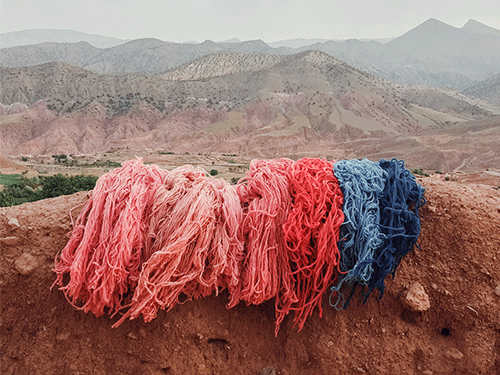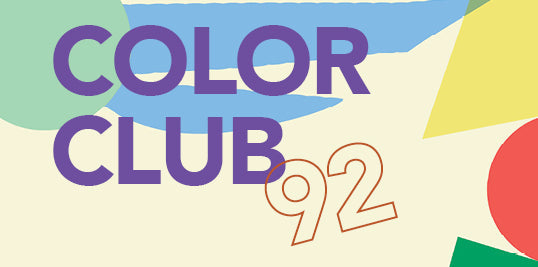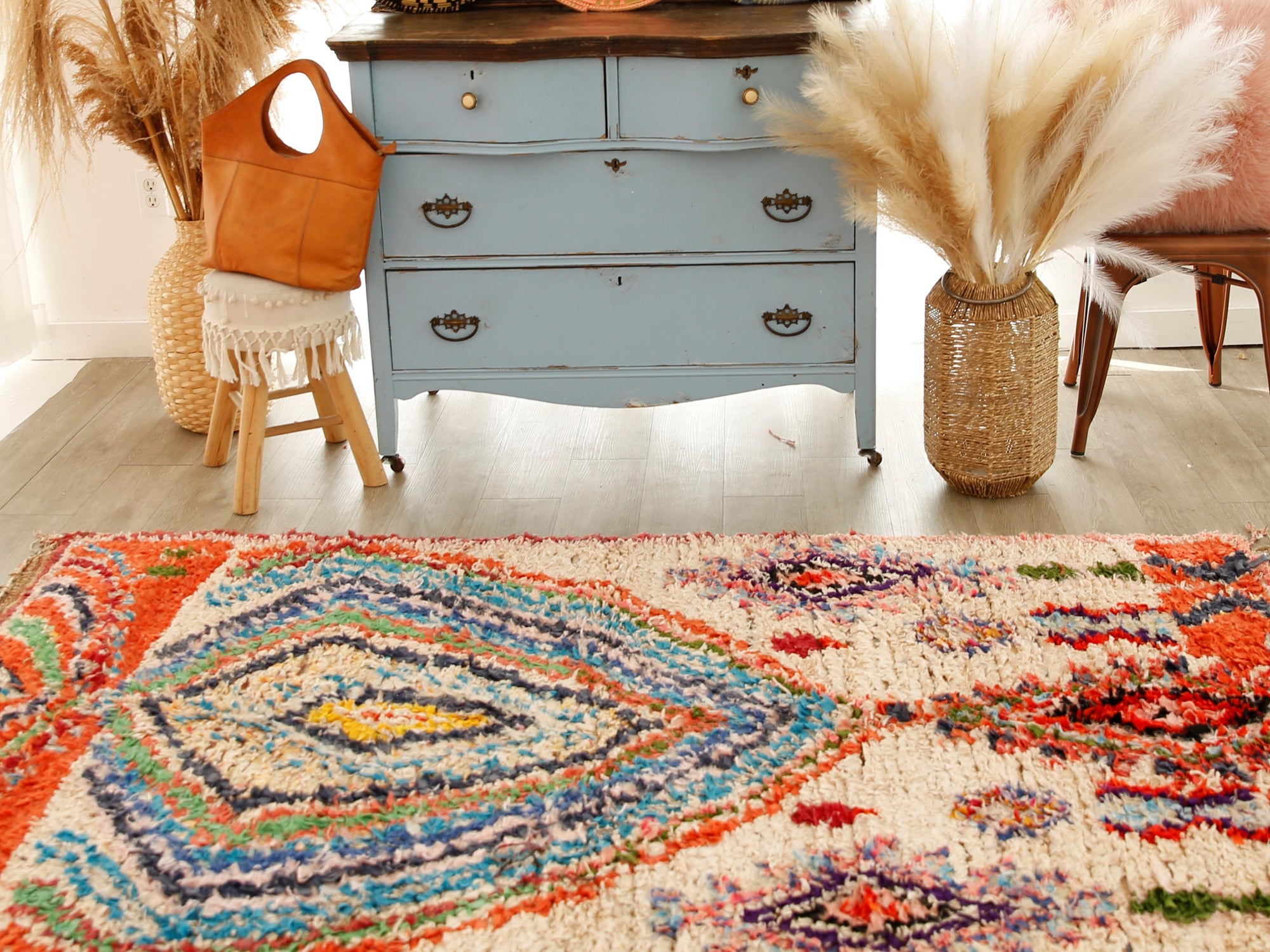
In the morning light, before the city wakes up and scooters take over the streets, we set out from our riad in Marrakech. Then it's two hours by bus across desert landscapes, and another two hours by car. It's a long, dusty ride on twisting mountain roads, but finally we reach this small, rural village, hidden in the valley. After Marrakech, the air feels pure and sweet.

We came to strengthen our relationship with the cooperative of weavers we work with to create our Loom + Field Collection Rugs. To better understand their work, their techniques, their constraints, and their organization. To improve our process and communication with our weavers, who are learning and motivated, but still struggling with reading, writing, and counting.

From the main road, where we leave our car, we continue by foot to reach the village where many of our weavers live. A group of rustic terracotta houses, the color of the Moroccan sand, where donkeys transport supplies from village to village. Chickens roam freely, darting across the dirt roads. Women bring plants from the fields, strapped onto their backs, and sheep come home to their pens. Children run down the mountain paths, bringing fresh water from the source.
Khadija, the head weaver, welcomes us into her home with open arms, like she does every time we visit. "Couscous or tagine?" she asks. We feel at home already.

Bright and early the next morning, with our project manager Tarik, we set out to visit each weaver in her home. Tarik is essential here, not just as our man on the ground, but as our interpreter. In the Atlas Mountains, the majority speak Berber. Going from home to home, we check on the progress of each rug, learn a bit about each weaver and her family, and share a cup of tea together.

One afternoon, we work on creating the perfect pink. Khadija gathers raw wool, processed and cleaned by the cooperative earlier that day, and carefully dips it into a pot of boiling water and Madder root. Ten minutes later, we have the perfect pink wool for future Gemma rugs. We hang the wool outside to dry in the hot Moroccan sun. The next day, Khadija will prepare more batches of pink wool, which will then be distributed to each weaver working on our rugs.

Hand-dyeing our wool in small batches means that each time the colors are slightly different. It's not an exact science, and there are no recipes to follow. Everything is done by feeling and experience. It's a bit of magic, and makes every rug truly unique.

Over the next few weeks, we meet each weaver several times to check on her progress, and improve the quality of the weaving. Though we've been working with the cooperative for a year now, this was the first time we were able to experience the daily life of our weavers for weeks, and take the first steps in developing more of a personal relationship with them. Sharing meals every day, having regular meetings with all the weavers together, and even spending time knotting rugs, side-by-side. We've got a long road ahead, but we can't wait to see where it takes us.





